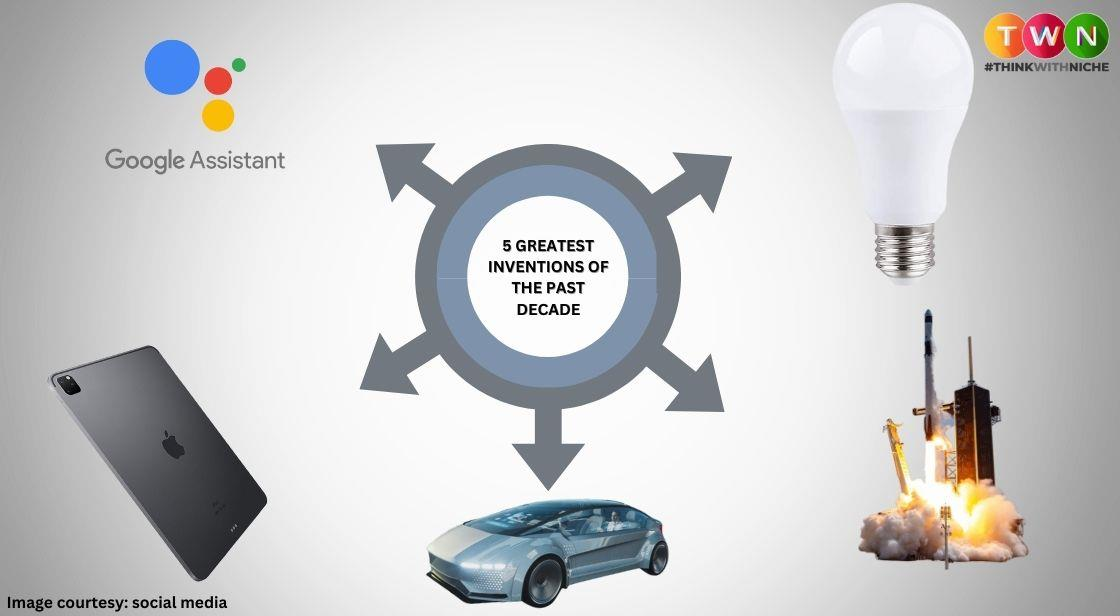5 Greatest Inventions Of The Past Decade
Innovations have always been defining of a certain historical era. A specific discovery or invention, whether in technology, health, fashion, or another area, progressively becomes a microcosm to characterise an entire historical era. That is how Apple gets brought up in discussions about the post-2000s economy of a capitalist America and how Volkswagen becomes a symbol of German history and World War 2.
Since we are in a new decade and are engulfed in a pandemic, all we can do is review the previous decade and assess which innovation was the most significant. The previous ten years have seen many incredible inventions and innovations, from the quickly evolving technology in smartphones to new and cutting-edge developments in artificial intelligence. Here are five of the best inventions from the last ten years.
Greatest Inventions Of The Past Decade
1. SpaceX Reusable Rocket
Humans have been able to fire rockets into space since the German V2 rocket was developed in 1942. Before cosmonaut Yuri Gargarin orbited the Earth successfully on April 12, 1961, manned space flight had to wait another 19 years. The subsequent "Space Race" between the US and Russia generated interest in space travel on a worldwide scale, although only the most developed countries are currently able to launch themselves into space.
At a time when space agencies dominated the industry and space hardware was essentially disposable, with the exception of NASA's space shuttle and its solid rocket boosters, Musk has claimed that few people thought it was feasible.
The development of reusable rockets for space travel is one of the greatest inventions in human history. Elon Musk's space business, SpaceX, launched a Falcon 9 rocket in December 2015, making history when it carried a payload into orbit before returning to a base camp in Cape Canaveral. One of the greatest discoveries of this decade may have been the development of reusable rockets, which lowers the cost of space travel. Additionally, reusable rockets will harm the environment less. Whatever your opinion of Elon Musk, the man undoubtedly has some brilliant ideas brewing.
How SpaceX has transformed spaceflight
According to Musk, he started looking into NASA's intentions to put people to Mars about 2002 and was shocked to discover there was no set timeframe. (NASA has recently suggested the 2030s as a goal date.) According to Wired, that is when Musk stated that he thought a Mars trip would inspire the country.
Musk concentrated on establishing a name for himself and acquiring contracts to launch satellites, supplies for the International Space Station, and people to the Earth's surface. It took years to demonstrate that SpaceX could compete with huge firms like Arianespace and United Launch Alliance in terms of reliability, but (as we'll see below) Musk's willingness to spend a lot of money researching reusable rocket technology aided in that effort.
The SpaceX Falcon 9 is a two-stage rocket made for carrying payloads and launching astronauts into space. The lower rocket stages of both the Falcon 9 and the larger heavy-lifter Falcon Heavy (which employs three Falcon 9 rocket boosters) can be returned upright to Earth or to an ocean-based drone ship. Four compact carbon fibre legs that each have a shock-absorbing mechanism unfold just before landing.
The ISS was developed during the Space Shuttle era, greatly increasing the accessibility of space travel. Although more than 130 Shuttle missions were carried out, the programme was never able to reach NASA's optimistic goal of 50 flights year, and each launch ended up costing $450 million on average. In contrast, the Falcon Heavy would cost $150 million, or one-third as much, to launch its maximum payload into low Earth orbit.
Launches will be 100 times less expensive, according to Musk, after the Falcon 9 incorporates technology to make its second-stage rocket reusable in addition to the first stage and its Dragon capsule.
2. Google Assistant
Formerly only found in science fiction, voice-based artificial intelligence is now a reality. Thanks to A.I. like Alexa, Siri, and the Google Assistant, we've reached the point where you can listen to the news, check the weather, send a text message, and start watching a video about how to fold your socks without getting up from your morning cereal or touching a gadget. Google Assistant is the most integrated into Android. It is present on your phone, may be in your living room, and is prepared to help you when you are driving.
Artificial intelligence from Google can be as subtle or as helpful as you like. But things haven't always been this way. Artificial intelligence has transformed from science fiction to a necessary component of daily life in just a few short years. In the case of Google Assistant, it has snuck into our homes and lives without even messing with the drapes.
Google Assistant's birth and evolution
While Google Now revolutionised how we used our phones, Google Assistant offered a peek of things to come. Despite its lofty claims, Google's Assistant began life as a small addition to its Allo messaging service. Its initial purpose was to pop up during chats when relevant or when requested. Although it wasn't perfect and was undoubtedly kept apart from the rest of its offerings, it was only the beginning. As evidence that the creation of Google Assistant was handled differently than other projects in the past, Google hired former Pixar animator Emma Coats and Google Doodle head Ryan Germick to give the Assistant more personality.
But it didn't take long for Google Assistant to break loose, first appearing on the original Google Pixel and the Google Home as a standalone feature, then appearing on additional smartphones running Android 6.0 Marshmallow and above in 2017. Most likely, this was the first time we saw the contemporary Assistant, which had a Home button-accessible interface and the ability to answer in a more conversational manner.
If we didn't include Google Assistant's influence on smart speakers, we'd be remiss. The first smart speaker to include Google's Assistant was the Google Home, which made its debut at Google I/O 2016 along with the Google Assistant, but it wasn't the only one.
3. Ipad
Apple has consistently been at the forefront of introducing cutting-edge technology. The iPad is one such item. When the iPad was first introduced in 2010, many made fun of its size. Since they were neither a phone nor a laptop, iPads were considered to be in the middle, which quite a few individuals found unacceptable. But its compatibility would soon disprove their claims. Apple has now sold more than 400 million units and significantly impacted the tech industry. Take note of the screen at the cashier the next time you visit the store. That is the type of impact that iPads have made.
Important
Tags:
greatest inventions of the past
decade, fast moving technology, advanced developments in artificial
intelligence
Read
This Full ARTICLE, Click Here





